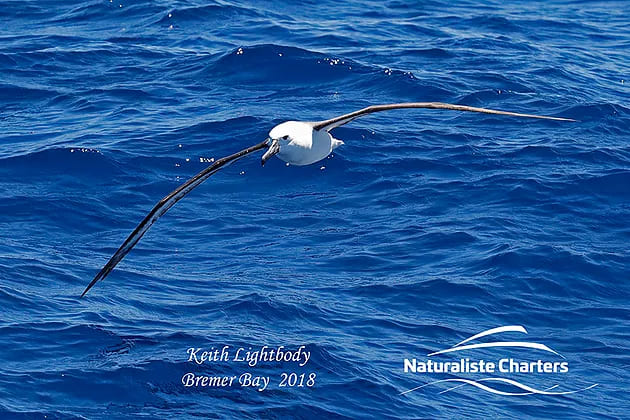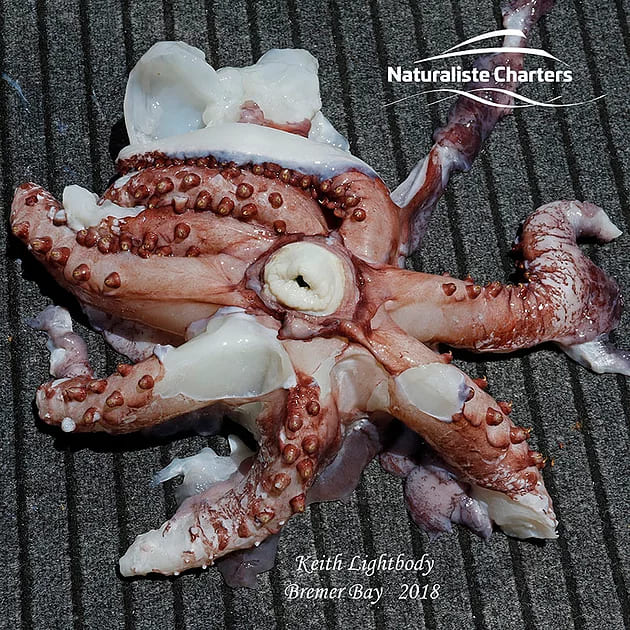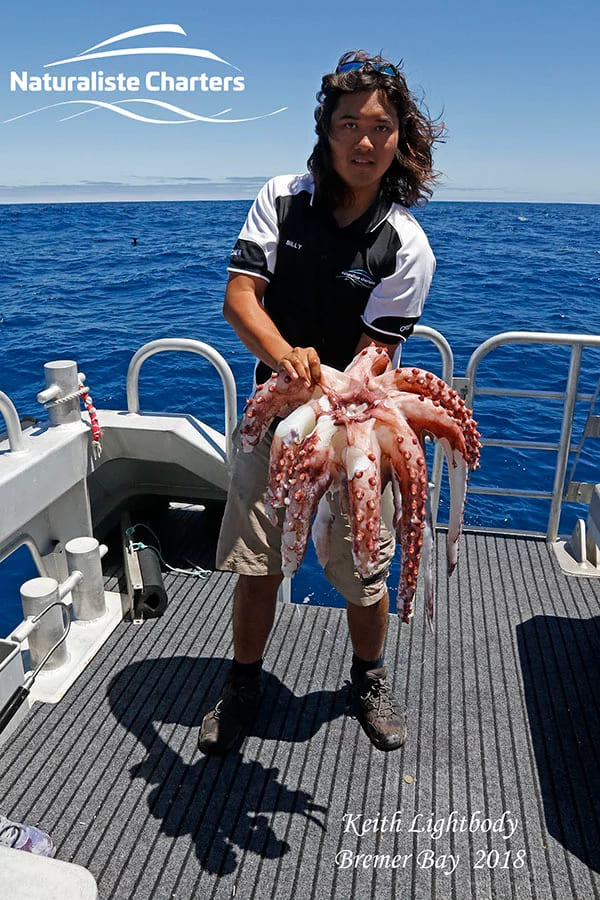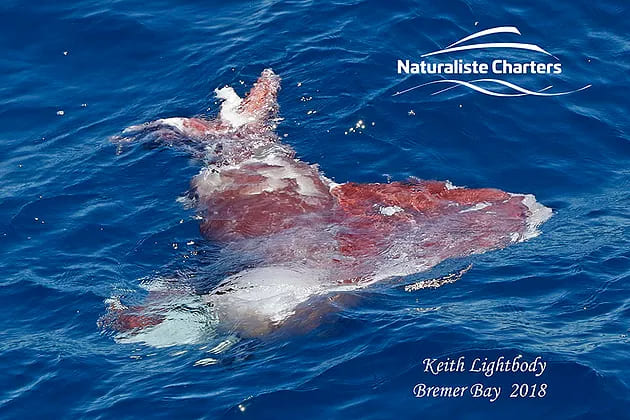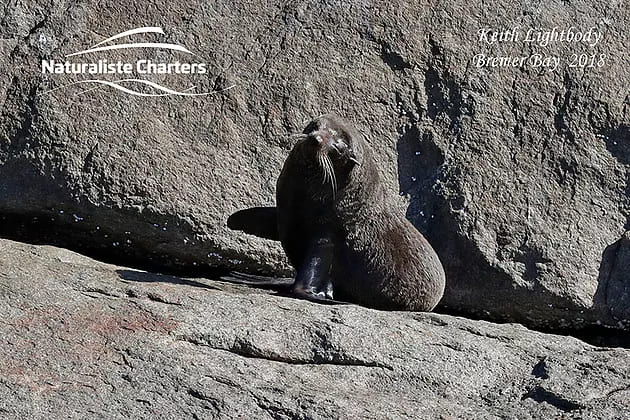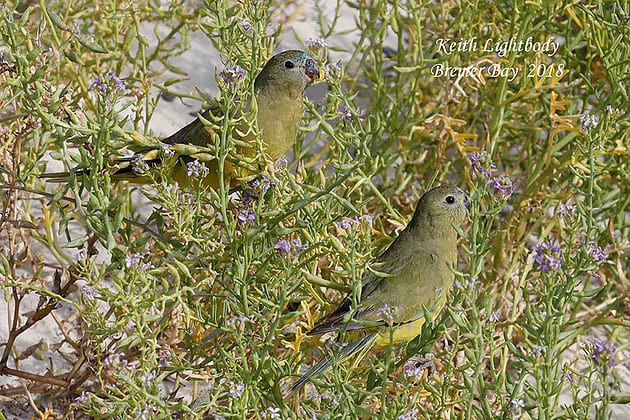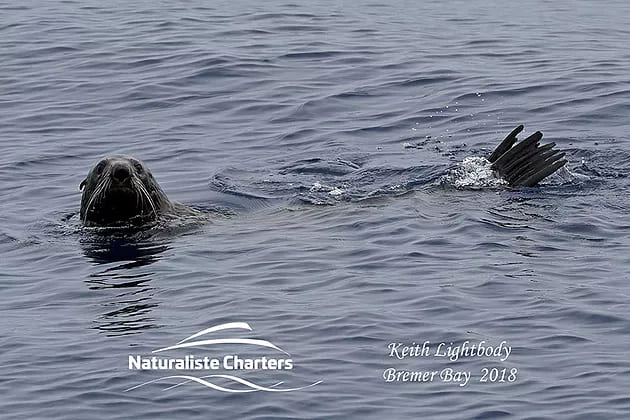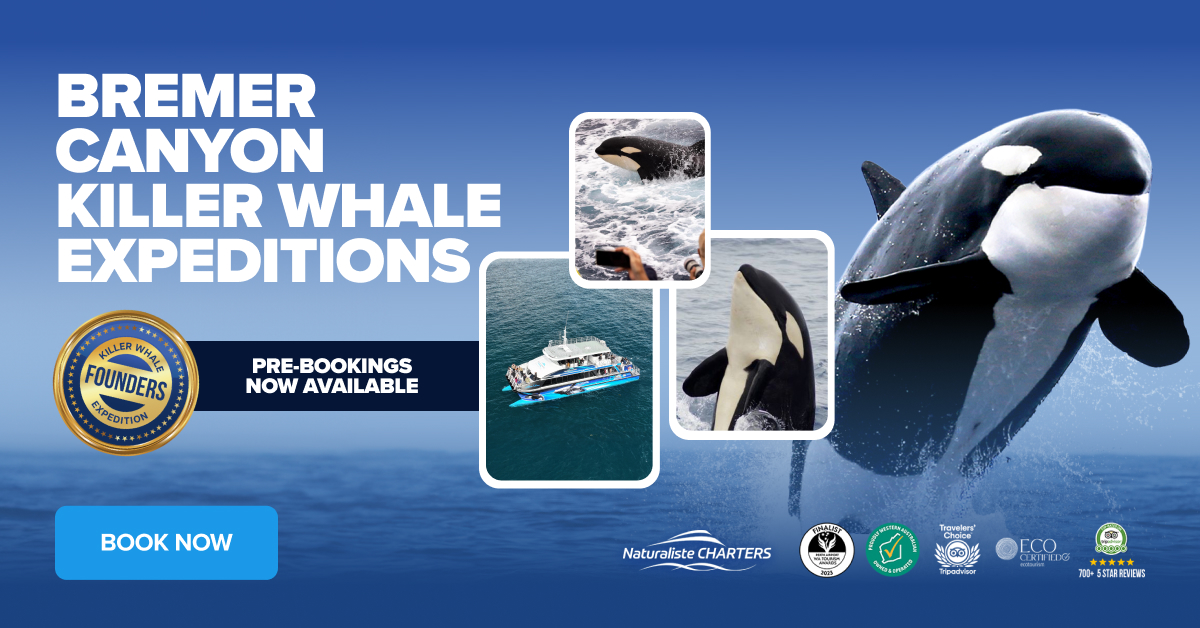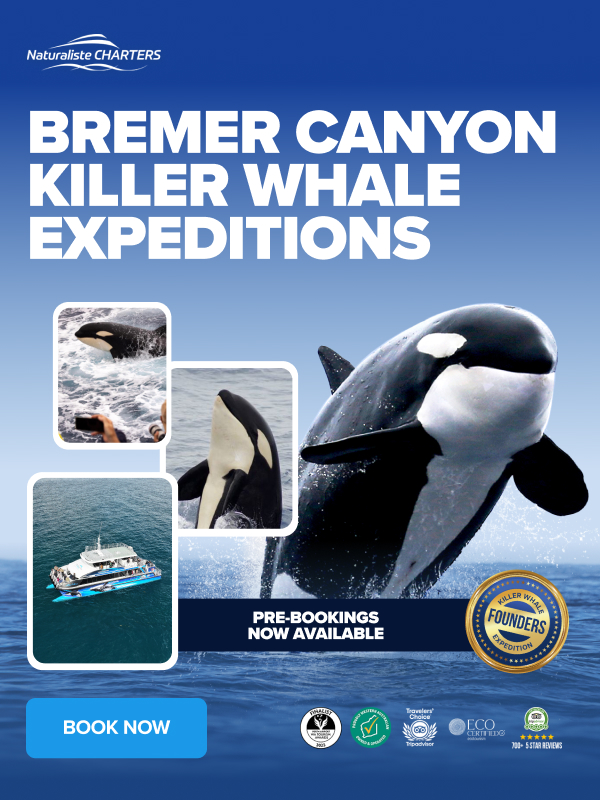The orca took a day off, but the Bremer Canyon went big today. Our expedition was a day of giants, including the largest squid and largest bony fish species on earth, and the world’s largest ray.
Our first encounter was with a lone fur seal, one flipper held aloft as if signalling in our direction. Fur seals conduct fishing expeditions that last for several weeks at a time and rest or briefly sleep while at sea, trailing one flipper in the water to monitor the current and one in the air to monitor wind direction. We left this one to return to it’s rest while we continued to the canyon.
A large oil slick greeted our arrival at the canyon, glistening on the sea surface. Tiny Wilsons Storm Petrels skimmed the surface to sip at the oily coating created when orca and other predators predators hunt prey with a high oil content such as marine mammals or fish such as tuna. However, the hunt was over, so we contunued ours.
Ahead, one of the predators of the southern ocean had itself become prey. Scraps of red and white showed clearly against the clear blue water. It was the remains of a giant squid. We use the term giant to describe size only, as it does not look like other giant squid we have encountered in other seasons where experts have confirmed Architeuthis dux as the species. Giant is an apt description though, as deckie Billy, who is over six foot tall said he could use the mantle as a sleeping bag! We brought the remains aboard to measure and photograph for identification purposes before returning to the ocean. We will keep you posted on what we find out. An oceanic blue shark made a brief close pass as it was carried away on the current.
Our second encounter of the giant kind was flagged in the true sense of the word as a single, narrow pointed fin cut the glassy surface. As we moved closer, we could see the unusual disc shaped body of a sunfish the largest bony fish species in the world. This individual was a juvenile by sunfish standards, at around 1.5m nose to tail and 2.2m between fin tips. Adults can reach over 4m in length and weigh over 2,000kg. Eventually, it slipped below the surface, and we contunued our search.
Our final meeting of the giant kind was with one of the most graceful. The Manta Ray is a stunning member of the devil ray family, if only for its sheer size. The largest species of ray in the world, it has a wing span that can reach 9 meters. They have a distinctive body shape with triangular pectoral ‘wings’ and paddle-like lobes extending in front of their mouths.
Our day of diversity was topped off by a visit to Glasse Island, sighting fur seals and Australian Sealions, the rarest sealion on earth basking in the afternoon sun.
Until tomorrow,
The Bremer Canyon Crew

